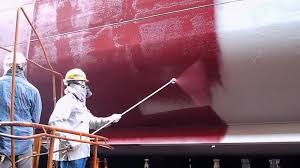
Effective use of anti-fouling paints in marine environment
The shipping industry recognizes environmental protection as one of its highest priorities and that every effort should be made to conserve and protect the environment from marine, atmospheric and other forms of pollution. To prevent the marine ecosystem, the antifouling system was introduced. It is an application of the surface treatment and coatings, paint or device primarily used on a ship to
control or to prevent the attachment of unwanted organisms.
The smoother a ship's hull, the more efficiently she moves through the water.
Antifouling paint is thus useful when applied in the hull. It prevents the build-up of marine growth, which would otherwise reduce the ship's speed and increase fuel consumption. Keeping the hull free of marine growth with one or more coats of quality antifouling paint is, therefore, a top priority for ship owners.


